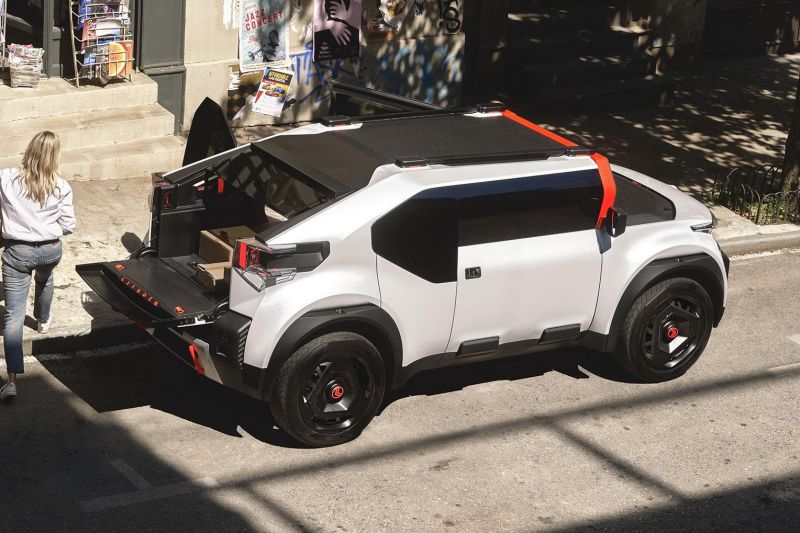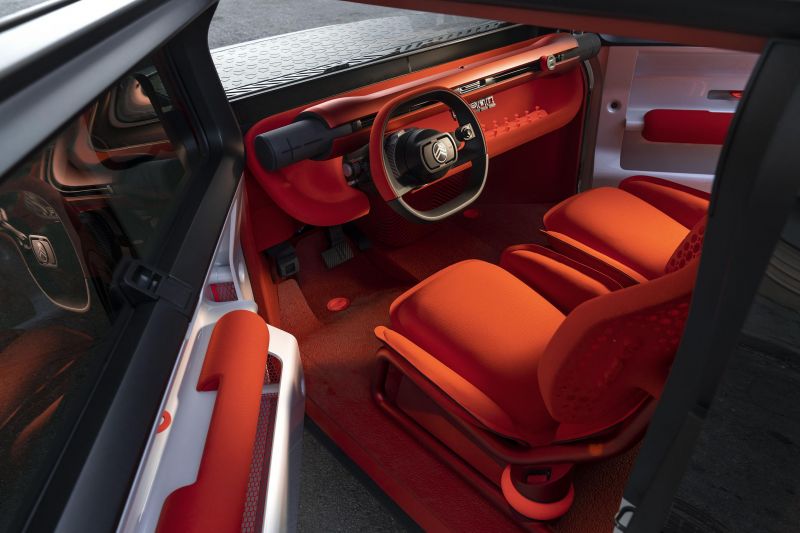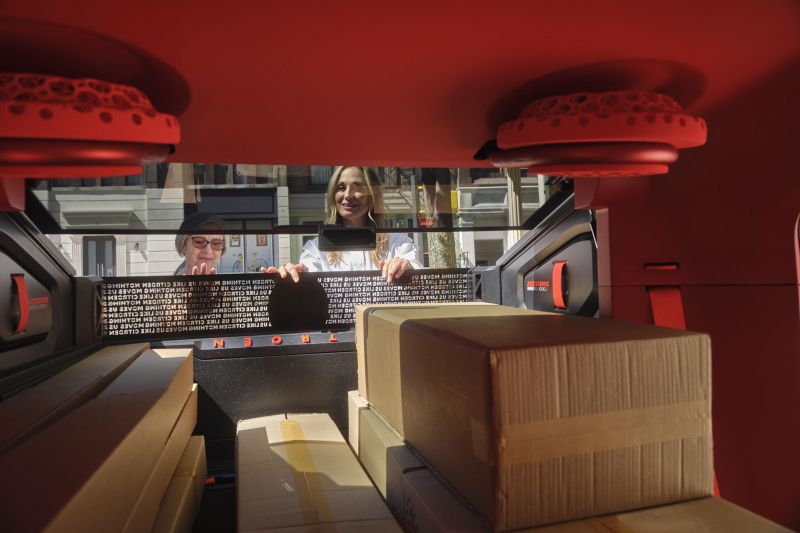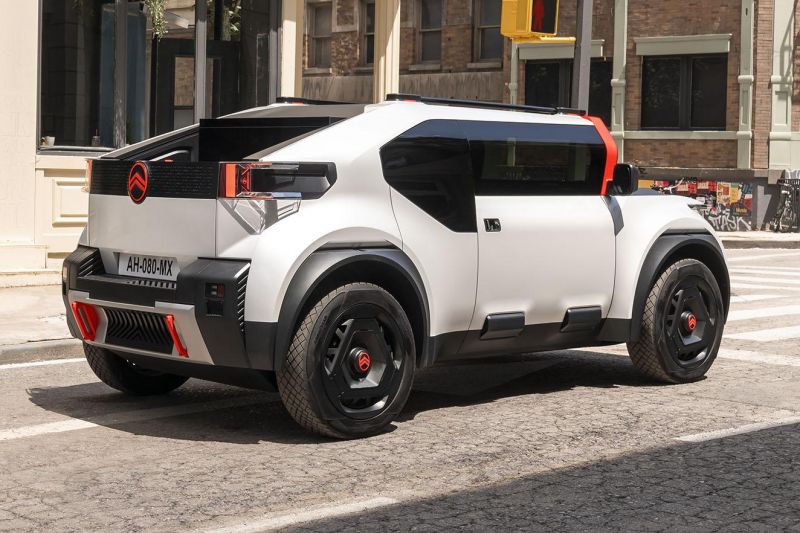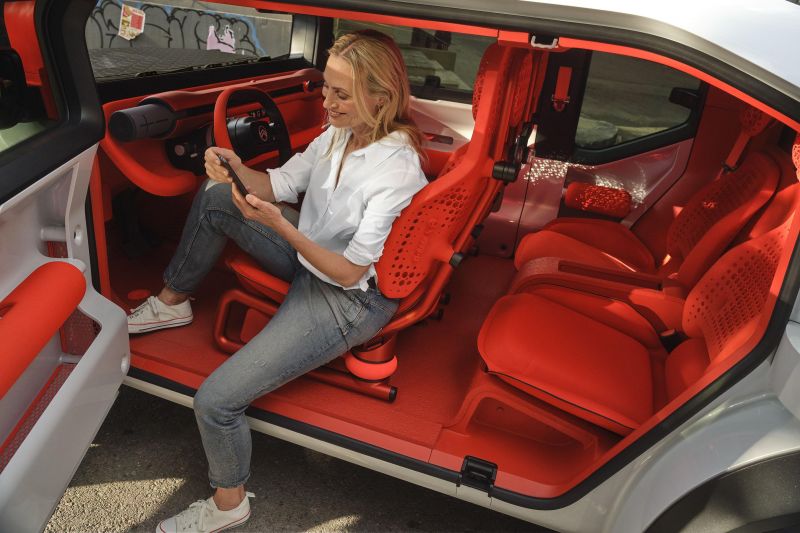The Citroen Oli concept mixes a modern EV drivetrain with a lightweight, minimalist and refreshingly screen-free interior.
Pronounced “all-e” — geddit? — the Oli showcases the company’s “vertical design language”, which marks quite a departure from today’s chunky, but rounded forms.
Time will tell if the Oli’s near vertical windscreen, front bumper, and vast array of interesting shapes will appear in future production models, or if these elements will be toned down.
Although it looks like a tiny crossover coupe, the Oli is in fact a ute, of sorts. Rather than a traditional hatch, there’s a fold-down tailgate and a glass panel that slides upwards towards the roof.
Cargo space can be expanded by folding down the rear seats, with the rear headrests flipping upwards to live in the ceiling.
While it looks nothing like the Ami or 2CV, the pragmatic designs of these two cars are cited as inspirations for the Oli.
Citroen CEO Vincent Cobée says the Oli embodies a desire to resist the tide towards ever larger, ever heavier vehicles that are parked most of the day and primarily used to transport just the driver.
“We need to reverse the trends by making [cars] lighter and less expensive and find inventive ways to maximise usage,” Cobée states.
Citroen has attempted to make its decontenting mission fun with the Oli featuring a smartphone dock instead of the usual infotainment touchscreen, a pair of removable Bluetooth speakers mounted at both ends of the dashboard, a roof made from recycled cardboard, and lightweight seats with a mesh backrest.
There’s no carpet in the cabin, but rather a single piece of easily cleaned and replaceable Thermoplastic Polyurethane foam.
Other weight reduction features include flip-up door windows, and new 20-inch “hybrid” steel and aluminium wheels that are lighter than cheaper steelies but less energy intensive to produce than traditional alloy wheels.
The Oli is fitted with a smallish 40kWh battery, which is said to give the car a 400km driving range. Part of this comes down to the car’s low mass, but Citroen has also limited the Oli’s top speed to 110km/h in order to improve range.
While the automaker hasn’t provided specifics about the car’s electrical setup, it says when the Oli is connected to an appropriate fast charger the battery can be replenished from 20 to 80 per cent in just 23 minutes.
The car also has vehicle-to-grid technology, so it can sell stored energy back into the electrical grid. Built-in electrical sockets allow the Oli to power electrical devices at a camp site or beach.
Again, like the styling, it will be interesting to see how many of these weight reduction and sustainability ideas will flow through to future showroom-ready Citroens.
According to Pierre Leclercq, Citroen’s design chief, “There’s no sense in proposing cool materials or designs that will never influence future production vehicles”.
Measuring 4.2m long, 1.65m tall, and 1.9m wide, the Oli has a squat stance, and can seat up to four people. To make ingress and egress easier, the concept has no B-pillar and the small rear doors are reverse-hinged.
The Oli is the first vehicle to wear the company’s redesigned logo. Unveiled earlier this week, the new badge is a throwback to the company’s first, and on the Oli it’s finished a striking shade of red — or Infra-Red in Citroen-speak.





